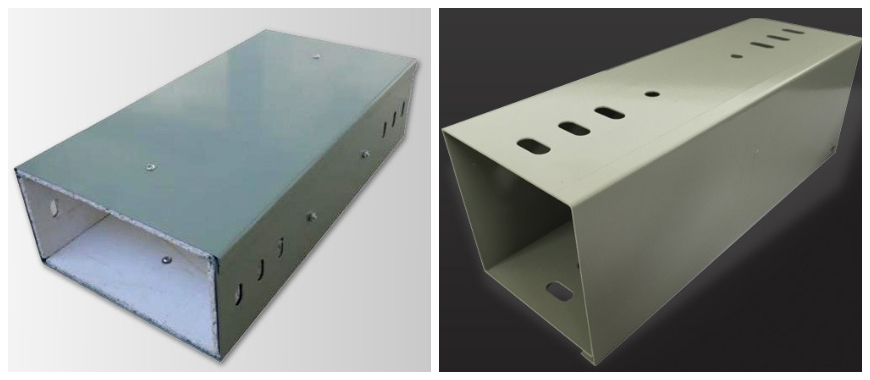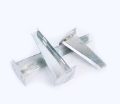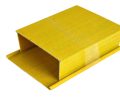
The single rail cable tray is an innovative solution for efficient and organized cable management. Designed for modern electrical systems, it offers a lightweight yet sturdy structure. Unlike traditional dual rail systems, it simplifies installation by using a single support rod at each point. This reduces material requirements, labor costs, and overall project complexity. The single rail cable tray allows cables to be laid easily on either side, eliminating the need for pulling cables through supports. Its versatile design accommodates various cable tray types, including trough, channel, and solid bottom options. Ideal for lighter-duty projects, this system enhances efficiency and ensures long-term reliability. By streamlining cable installation, the single rail cable tray meets diverse industrial and commercial requirements effectively.
What is a Single Rail Cable Tray?
What Are Single Rail Cable Tray Systems
Definition and Core Concept of Single Rail Cable Tray
A single rail cable tray is a center-supported system designed to streamline cable management. Unlike traditional dual side rail trays, it uses a single rail structure for support. This unique design reduces the need for multiple supports and allows cables to be laid in easily from either side, eliminating the complexities of pulling cables through enclosed spaces. The single rail type cable tray is especially effective in environments where space efficiency and ease of installation are priorities. Its simplicity and functionality make it a preferred choice in modern electrical installations, providing a cost-effective and reliable cable tray solutions for various cable management needs.
Applications in Modern Cable Management Solutions
The single rail cable tray is suitable for a wide range of industries and applications. Some common use cases include:
- Industrial Facilities: Supports cables in manufacturing plants, ensuring organized and safe power distribution.
- Commercial Buildings: Provides efficient cable management for office wiring and HVAC systems.
- Data Centers: Organizes and protects data cabling for servers and networking equipment.
- Transportation Infrastructure: Manages power and communication lines in tunnels, bridges, and transit systems.
- Renewable Energy Projects: Ensures proper cabling in solar and wind energy installations.
These applications demonstrate the versatility and adaptability of single rail cable trays across different environments.
Key Features of Single Rail Cable Trays
Lightweight and Space-Saving Design
The single rail cable tray is engineered to minimize weight without compromising strength. Its streamlined structure occupies less space, making it ideal for areas with spatial constraints. By reducing the tray’s footprint, it allows more room for other systems, such as plumbing or ventilation ducts. Additionally, its lightweight nature simplifies transportation and installation, reducing labor requirements.
Efficiency in Reducing Support and Hardware Requirements
One of the most notable features of a single rail cable tray is its minimal support requirement. Using a single hanger rod at each support point reduces material usage and installation time. Fewer hardware components are needed, leading to cost savings and a cleaner installation. This efficiency makes single rail cable trays a sustainable and economical option for various projects.
How to Choose the Right Device Cable Tray System
Exploring Different Single Rail Cable Tray Sizes
Standard Sizes for Single Rail Cable Trays
Overview of Commonly Available Sizes
Single rail cable trays are available in various sizes to accommodate different cable loads and configurations. Common widths range from 6 inches to 24 inches, while lengths typically vary from 6 feet to 12 feet. These dimensions ensure compatibility with standard cables and fittings, making them suitable for most applications.
How to Select the Right Size for Your Project
Choosing the appropriate size depends on:
- Cable Load: Consider the number and diameter of cables the tray needs to support.
- Environmental Factors: Evaluate space constraints and installation conditions, such as indoor or outdoor environments.
- Future Expansion: Plan for additional cabling needs to avoid frequent upgrades.
- Compliance Requirements: Ensure the tray size meets industry standards like NEMA or IEC.
- Cost Efficiency: Balance size requirements with budget constraints to optimize investment.
By assessing these factors, project managers can select a size that meets their needs effectively.
Customizing Single Rail Cable Trays for Specific Needs
Options for Tailoring Sizes to Unique Installations
Customizing single rail cable trays allows for flexibility in meeting specific project requirements. Options include:
- Material Modifications: Using different materials like aluminum or stainless steel for unique environments.
- Coating and Finishes: Adding protective coatings for corrosion resistance in harsh conditions.
- Custom Dimensions: Adjusting width, depth, or length for non-standard installations.
- Additional Features: Integrating features like extra rungs or dividers for specific cable types.
- Specialized Support Structures: Designing supports for seismic zones or high-vibration environments.
Customization ensures that single rail cable trays adapt seamlessly to diverse industrial and commercial needs.
Types of Cable Trays Compatible with Single Rail Systems
Trough Cable Tray and Its Applications
When and Where to Use Trough Cable Trays
Trough cable trays feature a partially enclosed design that provides moderate protection for cables. These trays are ideal for:
- Industrial Settings: Protect cables from moderate exposure to debris or mechanical damage.
- Commercial Buildings: Support and organize communication and power cables.
- Outdoor Installations: Shield cables from light weather conditions like dust or rain.
- Sensitive Environments: Maintain cable integrity in areas with mild chemical exposure.
- Temporary Installations: Provide quick and effective cable management in short-term projects.
Their balance of protection and accessibility makes trough cable trays versatile and reliable.
Solid Bottom Cable Tray for Enhanced Protection
Advantages of Solid Bottom Trays for Secure Wiring
Solid bottom cable trays are fully enclosed, offering superior protection for cables. Key advantages include:
- Complete Coverage: Protects cables from dust, moisture, and physical damage.
- Noise Reduction: Minimizes electromagnetic interference between power and data cables.
- Aesthetic Appeal: Hides cables for a cleaner, more organized appearance.
- Durability: Ensures long-term protection in challenging environments like factories or outdoor installations.
- Improved Safety: Reduces risks of accidental contact with live wires.
These benefits make solid bottom trays an excellent choice for high-security and heavy-duty applications.
Channel Cable Tray for Compact Installations
Benefits of Channel Trays for Smaller Projects
Channel cable trays are compact and lightweight, designed for limited cable loads. They are particularly useful in:
- Small-Scale Installations: Ideal for supporting a few cables in tight spaces.
- Wall-Mounted Applications: Easily installed along walls for vertical cable routing.
- Cost-Effective Projects: Provide a low-cost solution for basic cable management needs.
- Indoor Use: Suitable for environments with minimal exposure to external factors.
- Quick Fixes: Perfect for quick installations or minor adjustments in existing systems.
Their simplicity and affordability make channel trays a practical solution for small-scale projects.
The single rail cable tray offers a revolutionary approach to cable management, combining efficiency, versatility, and simplicity. Its lightweight design and reduced hardware requirements make it a cost-effective choice for diverse applications. With various sizes and types available, single rail cable trays can meet the demands of industrial, commercial, and specialized installations. Whether you’re managing cables in a factory, office, or data center, the single rail cable tray provides a streamlined and reliable solution. By understanding its features and benefits, you can ensure your next project is both efficient and future-ready.
How to Optimize Cable Management Using a Coaxial Cable Tray
Single Rail Cable Tray Installation Guide
Simplified Installation Steps for Single Rail Cable Tray
Tools and Techniques for Efficient Installation
Installing a single rail cable tray requires proper planning and the right tools to ensure efficiency. Tools commonly used include:
- Drills and Drivers: For securing supports and fasteners.
- Measuring Tape: Ensures accurate spacing and alignment of trays.
- Leveling Tools: Helps maintain even installation.
- Cutting Tools: For customizing tray lengths if needed.
- Safety Gear: Gloves, goggles, and helmets for installer protection.
Techniques for efficient installation:
- Pre-Installation Planning: Mark the installation area to identify support points and tray paths.
- Support Placement: Position single hanger rods at measured intervals to minimize support points while ensuring stability.
- Tray Assembly: Assemble sections on the ground when possible, reducing labor required at heights.
- Fastening Components: Use single-bolt connections to simplify the process and secure sections quickly.
- Cable Installation: Lay cables directly into the tray from either side to avoid pulling them through narrow spaces.
Reducing Support Points with a Single Hanger Rod System
One key advantage of a single rail cable tray is its reduced need for supports. By using a single hanger rod at each support point:
- Material Usage Is Minimized: Fewer rods and brackets are required, saving costs.
- Labor Requirements Are Lowered: Installation becomes quicker and less labor-intensive.
- Structural Integrity Is Maintained: Proper spacing ensures the tray remains stable under load.
- Accessibility Is Improved: Fewer supports mean easier access for future maintenance or upgrades.
This system reduces complexity and optimizes efficiency for installers.
Best Practices for Secure and Long-Lasting Installations
Ensuring Compliance with Industry Standards
Meeting industry standards ensures safety and performance. For single rail cable trays, compliance is crucial:
- NEMA Standards: Verify that trays meet NEMA 12B or 12C standards for structural integrity and durability.
- Load Capacity Testing: Ensure the tray can handle the expected cable weight.
- Environmental Suitability: Choose materials suitable for indoor, outdoor, or corrosive environments.
- Fire Safety Regulations: Confirm compliance with local fire safety codes.
- Seismic Ratings: Consider seismic standards if installed in high-risk areas.
These measures ensure a secure and reliable installation, protecting both equipment and personnel.
Tips to Minimize Labor and Hardware Requirements
- Use Pre-Assembled Components: Reduce assembly time by opting for pre-attached rungs and fittings.
- Standardize Tray Sizes: Select uniform sizes to simplify the layout and minimize adjustments.
- Organize Tools and Materials: Keep tools accessible to avoid delays during installation.
- Work in Teams: Assign specific tasks to team members for a streamlined workflow.
- Plan Cable Placement: Organize cables by function and size before laying them into the tray.
These strategies help complete installations faster while ensuring quality and durability.
Comprehensive Guide to B Line Cable Tray Barrier Features
How to Purchase Single Rail Cable Trays
Finding the Right Single Rail Cable Tray for Sale
Key Factors to Consider, Including Material and Load Capacity
When purchasing a single rail cable tray, several factors must be evaluated:
- Material: Options include aluminum, steel, and fiberglass. Aluminum is lightweight, steel offers durability, and fiberglass resists corrosion.
- Load Capacity: Determine the total weight of cables to select a tray that can handle the load.
- Environment: Choose weather-resistant materials for outdoor use or chemical-resistant coatings for harsh conditions.
- Tray Type: Decide between trough, solid bottom, or channel trays based on the installation’s needs.
- Compatibility: Ensure compatibility with existing systems or future expansions.
By addressing these factors, you can select a tray that meets both functional and budgetary requirements.
Ensuring Compliance with Standards in Your Purchase
Verifying Compliance with NEMA and Other Relevant Standards
To ensure the quality of a single rail cable tray, confirm it adheres to industry standards:
- Structural Integrity: NEMA 12B and 12C certifications verify the tray’s ability to handle weight and stress.
- Corrosion Resistance: Look for trays with certifications for outdoor or chemical-heavy environments.
- Fire Ratings: Verify compliance with fire safety standards to protect cables during emergencies.
- Electrical Conductivity: Ensure the tray material is suitable for the specific electrical environment.
- Dimensional Standards: Confirm the tray matches industry-standard sizes for easier integration.
Purchasing a compliant tray ensures long-term reliability and performance.
Advantages of Using a Single Rail Cable Tray System
Cost-Effective Solutions for Cable Management
Reduction in Material, Labor, and Component Needs
Using a single rail cable tray significantly lowers project costs. Key cost-saving benefits include:
- Material Efficiency: Fewer support points mean reduced material usage, saving money on hanger rods and brackets.
- Labor Savings: The simplified design allows for quicker installations, reducing the number of workers needed.
- Lower Hardware Costs: Single-bolt connections and fewer components reduce hardware expenses.
- Minimal Maintenance: The robust structure requires less upkeep, cutting long-term maintenance costs.
- Optimized Space Usage: The compact design frees up space for other systems, eliminating the need for additional infrastructure.
These factors make single rail cable trays a cost-effective choice for large and small-scale projects.
Flexibility and Efficiency for Various Applications
How Single Rail Cable Trays Adapt to Diverse Industrial Environments
Single rail cable trays are versatile and can adapt to different scenarios. Examples include:
- Industrial Plants: Manage power and control cables efficiently in manufacturing facilities.
- Data Centers: Organize large volumes of data cabling for smooth operations.
- Renewable Energy Projects: Support solar panel wiring or wind turbine cabling in challenging outdoor conditions.
- Transportation Hubs: Route communication lines in airports, railways, or tunnels.
- Commercial Spaces: Provide clean and organized cable management for offices and retail centers.
Their adaptability ensures reliable performance across a wide range of environments.
The single rail cable tray is a versatile, cost-effective, and efficient solution for modern cable management needs. Its lightweight design, minimal hardware requirements, and compliance with industry standards make it suitable for various industries. Whether you need a reliable system for a data center or a durable tray for an industrial facility, single rail cable trays deliver both flexibility and long-term value. By following proper installation guidelines and selecting high-quality trays, you can optimize performance while reducing costs and maintenance.
FAQs about Single Rail Cable Tray
A single rail cable tray is a streamlined cable management system designed for efficient and organized routing of cables. Unlike traditional dual rail trays, it features a single center rail supported by hanger rods. This design reduces material usage, simplifies installation, and provides easy access for laying cables from both sides. Single rail cable trays are commonly used in industrial, commercial, and infrastructure projects where efficient space utilization and cost-effectiveness are essential. These trays can support various cable types, including power, control, and communication cables, making them versatile for diverse applications.
Cable trays are categorized into three main types based on design and application. The first type is a ladder tray, which features rungs that provide maximum ventilation for heat dissipation, making it ideal for high-power cables. The second type is a solid bottom tray, designed for complete cable protection against dust and physical damage, often used in environments with sensitive cables. The third type is a trough tray, which offers moderate protection while maintaining some ventilation, commonly utilized in commercial settings. Each type is selected based on the specific cable management needs of a project, balancing factors like ventilation, protection, and cost.
Cable trunking and cable trays are both used for cable management, but they serve different purposes. Cable trunking is an enclosed system designed to fully protect cables, typically used in indoor environments where cables need complete shielding from dust, moisture, or accidental contact. Cable trays, on the other hand, are open systems that allow for better ventilation and easier cable access, making them suitable for high-capacity or outdoor installations. While cable trays can handle larger cable volumes, trunking systems are preferred for aesthetic purposes or where security is a priority.
Certain cables are not permitted on cable trays due to safety and regulatory concerns. For instance, cables without proper insulation or fire-resistant properties are unsuitable for tray installations. Flexible cables and cords, which lack the necessary mechanical strength, should also be avoided. Additionally, cables not approved by local electrical codes or those designed for underground installations are generally prohibited. Always verify that the selected cables comply with relevant standards and are rated for use in cable trays to ensure safety and performance.

As the editor of GangLong Fiberglass, I have years of experience and in-depth research, focusing on cable tray products, fiberglass solutions, and grille systems. I incorporate years of industry insights and practical experience into every content, committed to promoting the progress of the industry. At GangLong Fiberglass, my commitment is reflected in every product, from innovative cable trays to durable fiberglass solutions and sturdy grille systems. As an authoritative voice in the industry, my goal is to provide valuable information to professionals and businesses and promote forward-looking solutions.


